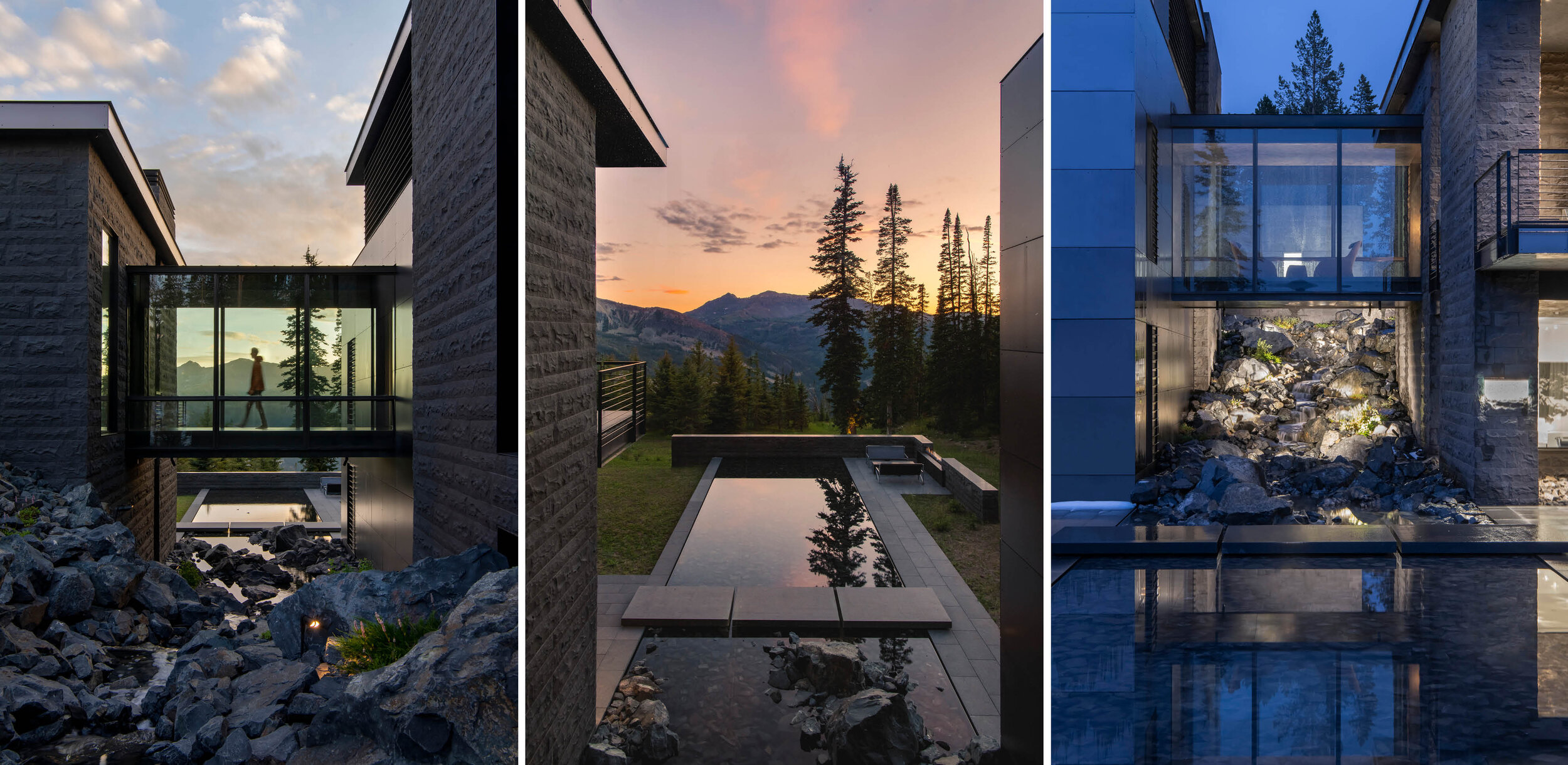Montana mountain retreat a modernist vision
A modernist vision of simplicity and natural materials, Design Workshop’s landscape architecture of Andesite Ridge Retreat employs a creative combination of engineering, technology, and artistry to capture and manage on-site stormwater.
Whilst responding to challenging site conditions it also acts as an experiential art installation, celebrating the imposing infinite boundaries of a landscape shaped by wind, fire, and the erosive power of flowing water and ice.
The 2.5-acre, forested site sits on a rocky promontory overlooking Montana’s Gallatin Range in America – a visually spectacular glacially-carved landscape that lies within the Greater Yellowstone Ecosystem.
The project won Design Workshop the 2021 WLA Award of Excellence in the Residential category. Photo credit: Brandon Huttenlocher/Design Workshop
Enticed by the environment’s dynamic of extremes, the owners embarked on the creation of a family retreat, one that married a contemporary mountain home composed of natural materials with a rugged environment.
The design—an artful composition of bold geometries and textures—calls attention to a dramatic and ecologically-rich environment through a series of restrained linear interventions that extend the visual and functional relationships of the home into the landscape, while simultaneously dissolving the barrier between designed space and natural environment.
The retreat is a year-round haven, offering different experiences for the different seasons. Photo credit: Brandon Huttenlocher/Design Workshop
Because the surrounding landscape is so dominant, the garden is limited to two distinct linear vignettes that extend both the visual and physical functions of the home. From the entry, a horizontal walkway and vertical wall create a procession that features sculpture, designed and crafted by the client.
The walk—composed of cut pavers and loosely cracked rock—includes an organised grid of aspen, an organic addition that infuses seasonal colour, texture, and shade.
By comparison, the second garden is conceived as an abstract reference to the geologic scree fields and theatre-like skies. Emerging as a small spring, water spirits its way from the front entry at the high point of the building, flowing downward in a stream of broken rock fragments softened with a patina of native plants.
Photo credit: Brandon Huttenlocher/Design Workshop
A central feature of the home, the stream offers both a visual and audible spectacle, its sound permeating the interiors and its reflections a constant reminder of the extraordinary surrounding natural environment.
As the stream course approaches the lower level of the home, water diffuses across an undulating stone delta, slipping beneath a bridge of floating stones, and collecting in a still pool that terminates on a destination fire pit. In a feat of engineering that abstracts and exaggerates the ephemeral nature of montane lakes, the landscape architect utilised a rainwater collection system to capture snowmelt and rainfall from the roof and driveway, later creating an experiential art installation that transforms a dry stream bed into a glassy plane of water (and all variations in between) over a 30-minute period.
The landscape is captured in the water. Photo credit: Brandon Huttenlocher/Design Workshop
The garden reinforces the owner’s commitment to protecting and enhancing the natural beauty of the site. A rainwater collection system captures snowmelt and rainfall from the roof and forecourt to support the stream and irrigation.
Indigenous grasses and wildflowers surround the home, requiring small amounts of irrigation only until establishment. Multiple measures taken during construction reduced impact to the slow-growing lodgepole forest.
Deadfall, typically removed when the project is complete, was removed at the beginning of the construction process, a preemptive measure specified by Design Workshop to enable sunlight to penetrate the tree canopy, encouraging a rich understory. Furthermore, the landscape architect led the development of a construction management plan, which overlaid areas needed for construction staging to occur in areas of proposed improvements.
All angles offer artistic views. Photo credit: Brandon Huttenlocher/Design Workshop
During most of the construction period, a more direct road offered a means of temporary access. The design intentionally called for a delay of construction of the final driveway to reduce the risk of over-use and damage.
These collective measures, in concert with a restrained hand, results in a sublime place that disappears into the surrounding forest, successfully protecting the site’s visual character, and reinforcing the client’s environmental values.




